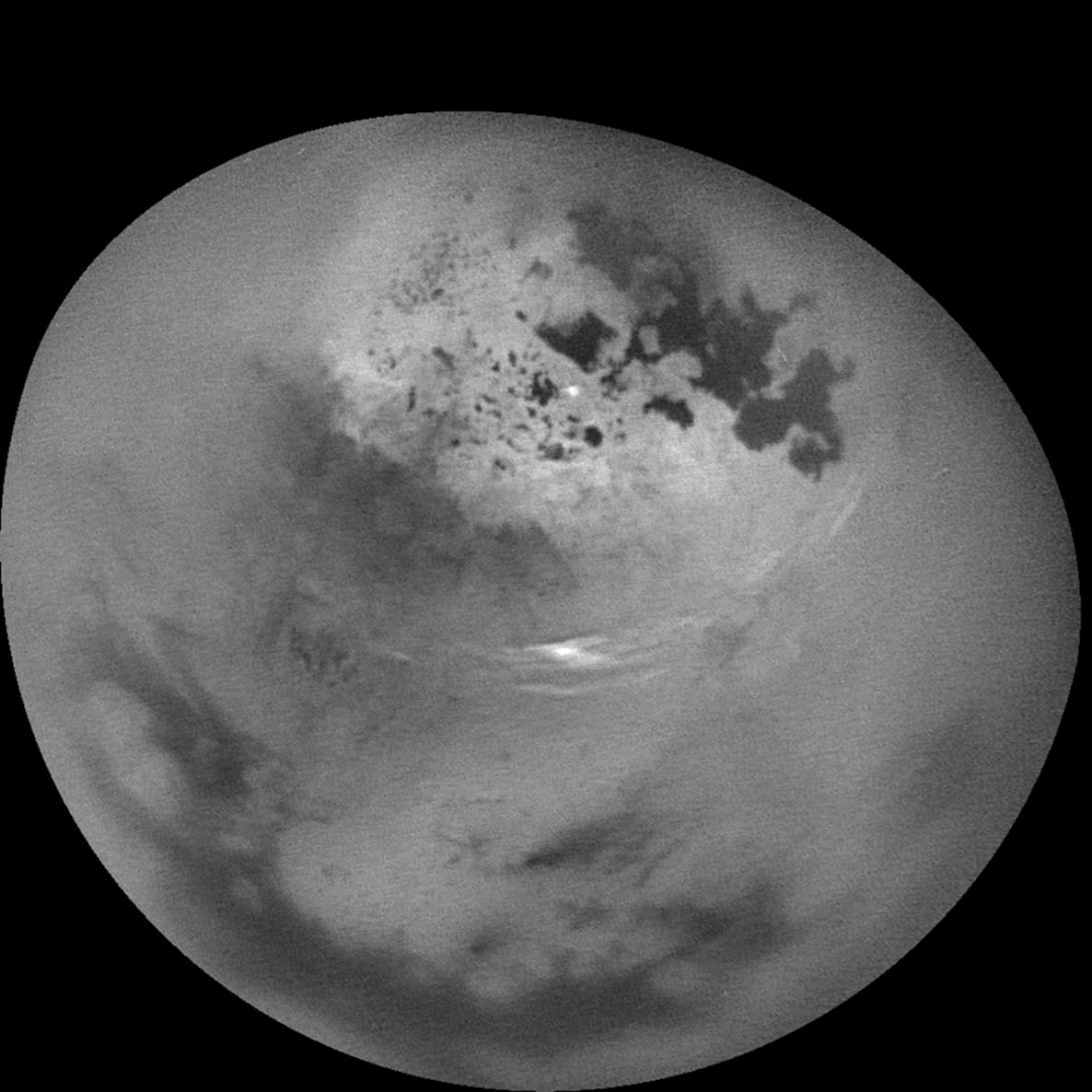

On October 29 and 30 the Cassini spacecraft (a cooperative project of NASA, ESA, and the Italian Space Agency) observed data of Saturn’s moon Titan, and a team developed a movie sequence which shows how summer methane clouds grow, move, and dwindle away there. (The link can be found below.) One frame was taken every twenty minutes, and an infrared filter was applied to enhance the visibility of the surface and tropospheric methane clouds. The most notable features are long clouds that stripe the sky between 49 and 55 degrees north latitude. While the cloud activity here seems consistent in general, some streaks appear to develop but then fade. They move at a speed of 14-22 miles per hour. Another notable feature is a small cloud cluster over some small northern lakes, which moves between 0.7 and 1.4 miles per hour. One cloud in the cluster is particularly bright.
Cassini has been examining Titan’s cloud patterns throughout 2016, but this study is the best one yet to help scientists study short-term activity, because most of the other studies have relied on snapshots taken days or sometimes even weeks apart. The observed cloud dynamics have been less active than models of Titan’s summer weather had predicted. This new data indicates that our understanding of the moon’s season transitions is incomplete. The program will continue studying Titan’s northern hemisphere for the summer solstice of 2017.
